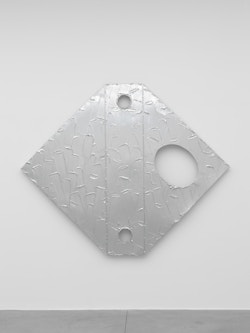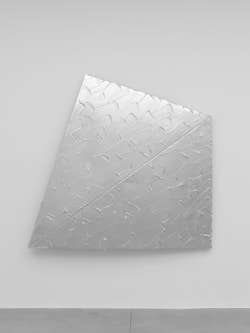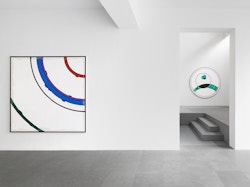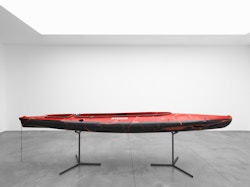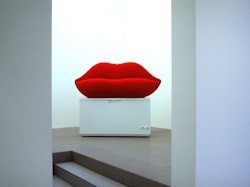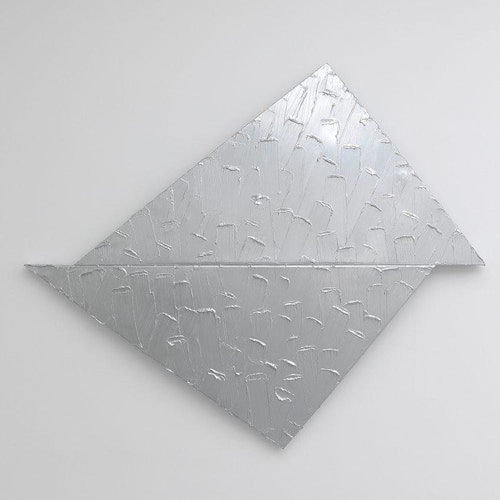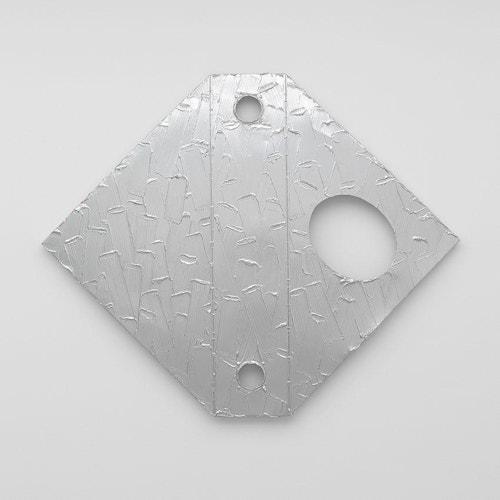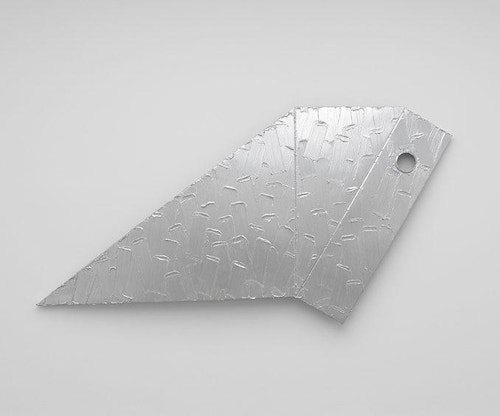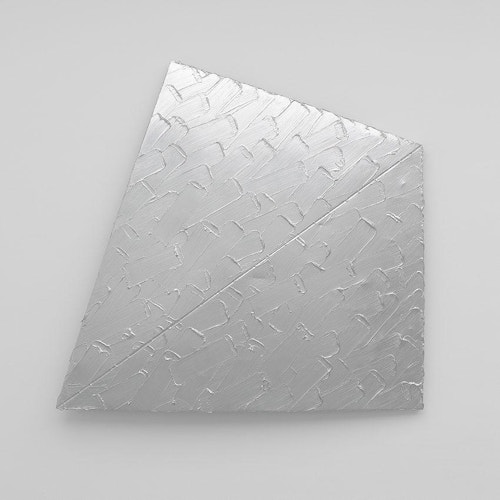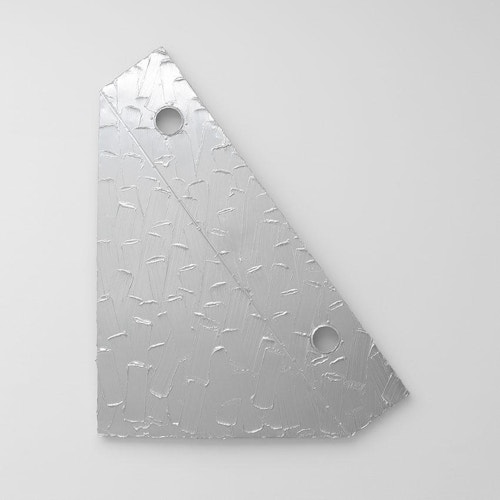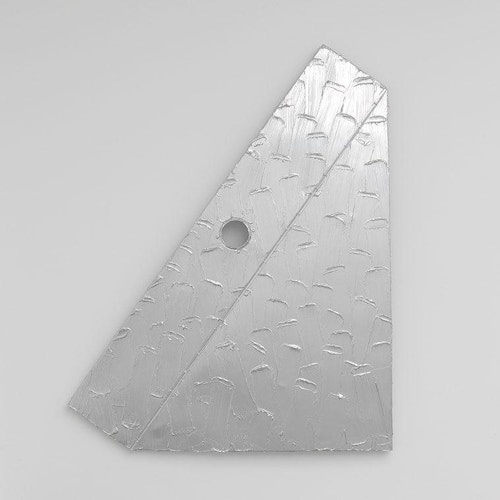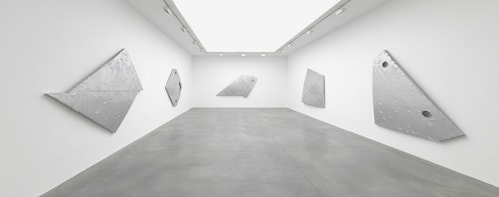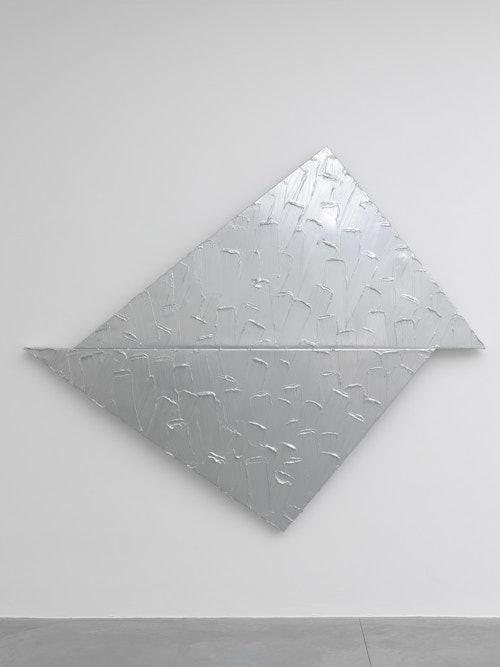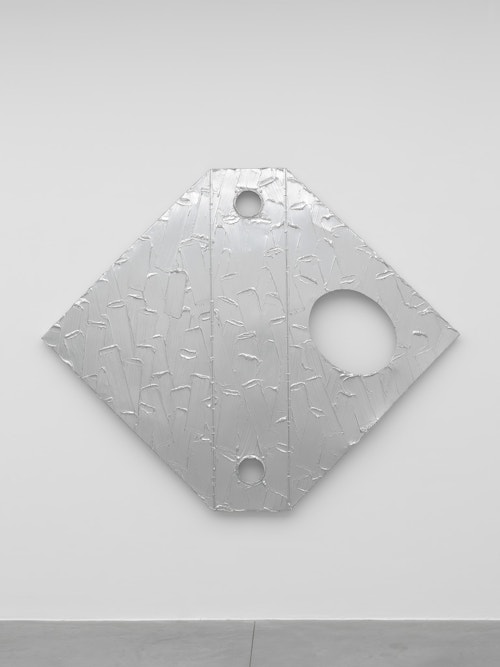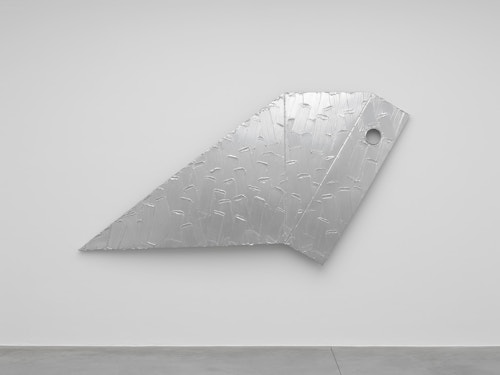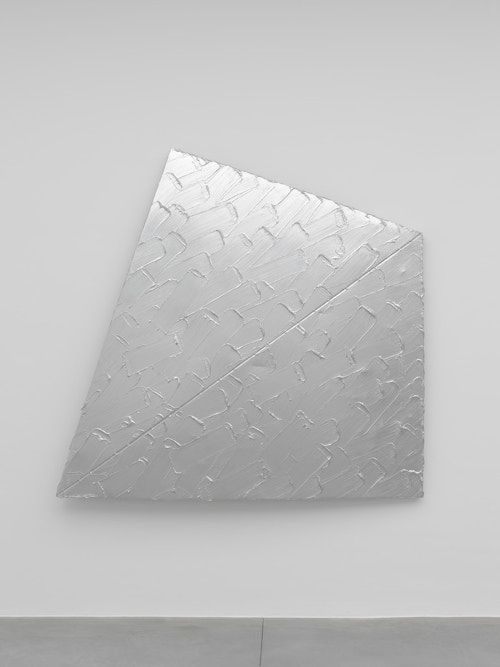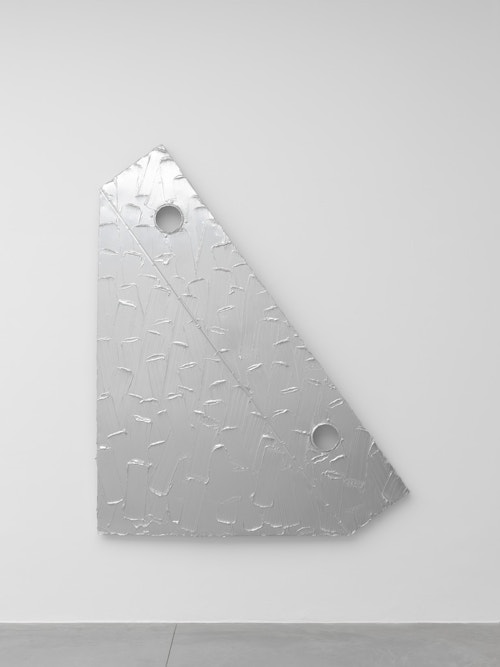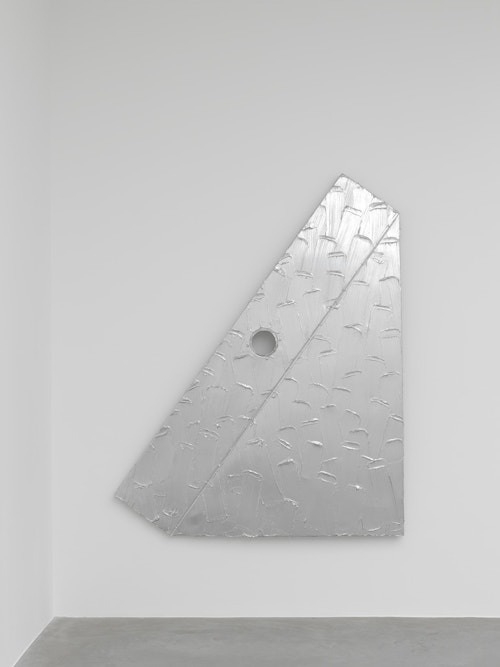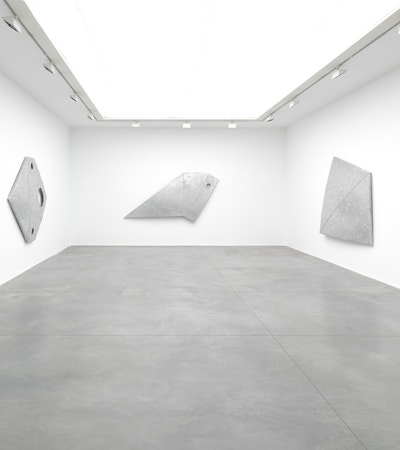
Bertrand Lavier Atomiums
Bertrand Lavier (°1949, Châtillon-sur-Seine) is a critical re-inventor of the tradition of the ready-made – the elevation of everyday objects to works of art. The artist created his first work in 1969 when he painted white the leaves of a climbing plant in the garden of his house in Burgundy. Lavier intended this as a somewhat ironic farewell to his horticultural background and an announcement of his new life as an artist. In fact, as of that first moment, he was already using paint to reflect reality by literally covering the plant, according to a visible contradictory principle, that would later be repeated in his most significant works.
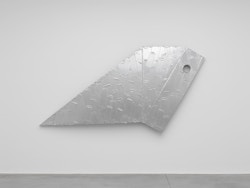
From the early 1980s, Lavier began to make “objets peints”,sculptural paintings that formed an important turning point in his work and secured him international recognition. Lavier’s “painted objects” are made from guitars, motorbikes, pianos, safe-deposit boxes, fridges, cars,… They are covered with thick strokes of acrylic paint that faithfully reproduces the colour of the surface it conceals. Bertrand Lavier does not make the object, nor does he imitate it or use it as simply ready-made. Rather, he considers it as a canvas, the basis of the work, while the objects simultaneously and paradoxically remain what they have always been. The first object he chose was a transistor radio that still functioned perfectly. Since then, Lavier’s painted objects have multiplied endlessly. They become, in the words of the artist, restated as “new plastic facts” brought into being at the dividing line between two languages, the art of painting and the art of sculpture and between two traditions, that of the ready-made, such as Duchamp, and modern painting. Lavier claims that his brush strokes, the painting technique he uses to cover his objects, originate from Van Gogh; an indication, in the legacy of modernism, that points to inner torment, existential drama and tragedy. The Van Gogh technique has become a durable cliché that Lavier weakens by creative handling of the paint in order to transform it from the banal practice of simply covering ordinary objects with paint, to a method dictated by the object itself.
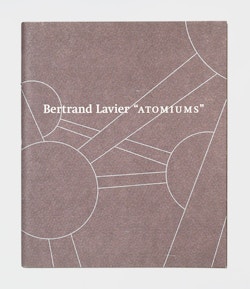
In “Atomiums”, the artist’s second exhibition at the gallery, Bertrand Lavier shows eleven new “objets peints”: eleven industrial plates originating from the Atomium in Brussels that he has painted with broad brush strokes of shiny silver acrylic paint, the original colour of the building’s construction. Lavier sees the Atomium as the “Eiffel Tower of Brussels”, a striking, architectural construction that was originally created for the opening of the World Exhibition, and which has become an icon for the city and still today, symbolises the lost utopian belief in technology and science, in other words, a sort of nostalgia for the future. Lavier uses the industrial Atomium plates, with their different shapes and sizes, as pre-formed canvases. Covered with thick strokes of silver paint, they become graceful, abstract object-paintings that bear a strong resemblance to the “panels” by the American modernist painter, Ellsworth Kelly. From the 1960s, in search of an anonymous and powerful object-orientated “présence” in his paintings, Kelly filled irregular shaped canvases with a monochrome field of colour and emphasised, via their hard edges, their relation to the wall against which they hung. Via an abstract language and works on a grand scale, the goal of Ellsworth Kelly was to achieve a transcendental and spiritual experience. This is not the case for Lavier. As their title suggests, the objects remain “Atomiums”: paintings yes, but also industrial plates and the remnants of a futuristic utopia. With “Atomiums”, like his other “objets peints”, Lavier questions the aura of an artwork from its modernist time perspective and projects it into a contemporary context where uncertainty dominates, where there is fluidity and ambiguity, but where the possibility also exists to combine different languages: the history of art with the language of contemporary consumer society, poetry with irony, experimentation with aesthetic suggestion.
The work of Bertrand Lavier is shown in numerous exhibitions throughout the world. He participated in the 1982 and 1987 editions of Documenta and has had major solo exhibitions at the Centre Pompidou and the ARC/Musée National de la Ville de Paris in Paris, Consortium in Dijon, Castello di Rivoli in Turin, and the Luigi Pecci Centre for Contemporary Art in Prato,…
